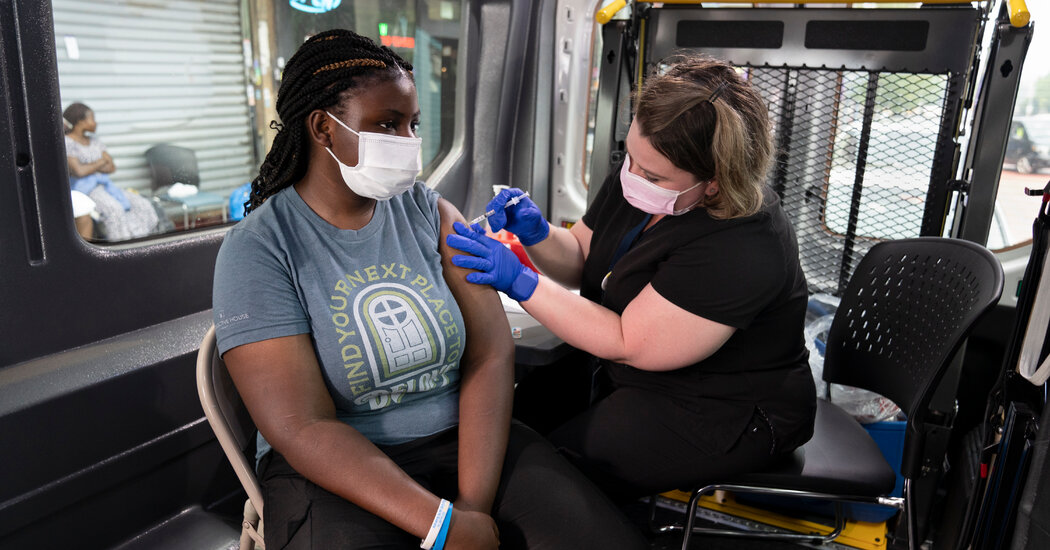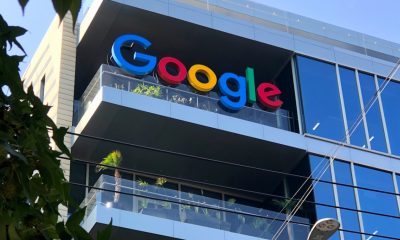MARKETING NEWS
Big Economic Challenges Await Biden and the Fed This Fall
WASHINGTON — The U.S. economy is heading toward an increasingly uncertain autumn as a surge in the Delta variant of the coronavirus coincides with the expiration of expanded unemployment benefits for millions of people, complicating what was supposed to be a return to normal as a wave of workers re-entered the labor market.That dynamic is creating an unexpected challenge for the Biden administration and the Federal Reserve in managing what has been a fairly swift recovery from a recession. For months, officials at the White House and the central bank have pointed toward the fall as a potential turning point for an economy that is struggling to fully shake off the effects of the pandemic — particularly in the job market, which remains millions of positions below prepandemic levels.The widespread availability of Covid-19 vaccines, the reopening of schools and the expiration of enhanced jobless benefits have been seen as a potent cocktail that should prod workers off the sidelines and into the millions of jobs that employers say they are having trouble filling.But that optimistic outlook might be imperiled by the resurgent virus and policymakers’ response to it. Big companies are already delaying return-to-office plans, an early and visible sign that life may not return to normal as rapidly as expected. At the same time, long-running federal supports for people hurt by the pandemic are going away, including a moratorium on evictions, which ended on Saturday, and an extra $300 per week for unemployed workers. That benefit expires on Sept. 6, and some states have moved to end it sooner.Federal lawmakers are also planning to repurpose more than $200 billion worth of Covid relief to help pay for a $1 trillion infrastructure plan. An infrastructure bill moving through the Senate would rescind previously allocated virus funds for colleges and universities along with unused unemployment benefits and airline aid. It would also claw back unspent funds from some expired small-business programs to help offset the plan’s $550 billion in new spending. Democratic leaders have been adamant that the Senate will vote on the infrastructure bill before leaving Washington for a scheduled August recess.White House economists have said they see no need yet to consider major new measures to bolster the recovery. After months of blockbuster economic growth, falling unemployment numbers, and complaints from business leaders and Republicans that government support is preventing workers from taking jobs, administration officials remain locked into their current policy stance despite renewed risks.Administration officials have said President Biden is not pushing to extend the extra $300 per week for jobless people. It’s unclear whether the administration will try to extend a program that expanded unemployment benefits to workers who would not typically qualify for them, including the self-employed, gig workers and part-timers.Officials say the $1.9 trillion economic aid package that Mr. Biden signed in March, and that caused forecasters to lift their estimates for growth this year, has given the economy enough cushion to endure another surge from the virus. Mr. Biden has also vowed that the virus will not lead to new “lockdowns, shutdowns, school closures and disruptions” like last year’s.“We are not going back to that,” he said last week.White House advisers say the most important thing the president can do for the economy is continue to make the case for more people to get vaccinated. On Thursday, Mr. Biden asked states to use money from the March stimulus package to pay $100 to every newly vaccinated person and said the government would reimburse employers who gave workers time off to be vaccinated or take others to get shots.“We have held the view from the beginning that addressing the pandemic and recovering the economy were inextricably linked. That continues to be true,” Brian Deese, who heads Mr. Biden’s National Economic Council, said in an interview. “But because of the progress that we have made in addressing the pandemic and in putting in place both historic and durable economic policy supports, we have a set of tools right now to address both of these challenges.”The Fed is taking an optimistic but wait-and-see approach. Central bankers voted at their July meeting to leave emergency support in place for now. They gave no precise date for when they may begin to reduce their help for the economy, though they are beginning to draw up a plan for paring back support.Much like their counterparts at the White House, officials at the Fed are counting on solid economic data this autumn. Jerome H. Powell, the Fed chair, said last week that he expected strong labor market progress in the months ahead, partly because virus fears and child care issues should subside.“There’s also been very generous unemployment benefits, which are now rolling off. They’ll be fully rolled off in a couple of months,” Mr. Powell said during a news conference after the Fed’s July meeting. “All of those factors should wane, and because of that we should see strong job creation moving forward.”Mr. Biden told a CNN forum in Ohio on July 21 that he still sees no evidence that the supplemental benefits have had a “serious impact” on hiring. But even if they had, he said, they would soon run their course.Updated Aug. 5, 2021, 8:45 a.m. ET“We’re ending all those things that are the things keeping people back from going back to work,” he said.That stance carries some risk. While the economy grew faster in the first half of this year than it had in decades, the job market is still missing 6.8 million positions from its February 2020 level, and while policymakers are optimistic, it is not clear how quickly those jobs will come back. The economy has never reopened from a pandemic before, and nobody knows to what degree unemployment insurance is dissuading workers.“Seven to nine million Americans should be working right now if the pandemic had never happened, so that’s a lot of Americans that we need to put back to work,” Neel Kashkari, president of the Federal Reserve Bank of Minneapolis, said on CBS’s “Face the Nation” on Sunday. “But is it six months, or is it two years? I’m not sure.”If it takes workers more time to go back into jobs, it could make for a much slower economic recovery than either the Fed or the White House is banking on. Workers stuck on the sidelines without enhanced benefits might pull back on spending, hurting demand and slowing the rapid rebound that has been underway in recent months.So far, administration economists remain heartened by the economic data. Officials said last week that they saw no evidence yet of the Delta variant’s hurting economic activity, and that they were hopeful that the more than 160 million Americans who were vaccinated would not pull back spending even if the variant continued to spread — making this wave of the virus less economically damaging than past ones.And as government spending support for the economy slows down, the Fed is still keeping money cheap to borrow, which should continue to pad economic growth.Fed officials have said they want to see more proof of the labor market’s healing before they slow their monthly bond purchases, which will be their first step toward a more normal policy setting.Mr. Powell said at his news conference last week that “we’re some way away from having had substantial further progress toward the maximum employment goal.”“I would want to see some strong job numbers,” he added.In the text of a speech on Friday, Lael Brainard, an influential Fed governor, said she wanted to see September economic data to assess whether the labor market was strong enough for the Fed to begin dialing back support, which suggests she would not favor signaling a start to the slowdown until later this fall. But her colleague Christopher J. Waller said in a CNBC interview on Monday that he would probably prefer to begin pulling back bond purchases quickly, if jobs data hold up, perhaps as soon as October.Increases in interest rates — the Fed’s more traditional, and more potent, tool — remain farther away. Most Fed officials in June projected that they would not lift their federal funds rate until 2023 at earliest, because they would like the labor market to return to full strength first.How rapidly the economy can achieve that goal is an open question. Employers regularly complain about the enhanced benefits, but even they have sent mixed messages on whether those are the main driver keeping labor at bay.“Many contacts were optimistic that labor availability would improve in the fall as schools restart and enhanced unemployment benefits end,” the Atlanta Fed’s qualitative report on business conditions found in June. “However, there were several who do not expect labor supply to improve for six to nine months.”Peter Ganong, an economist at the University of Chicago, said that if the pattern that he and his fellow researchers had seen in employment data held, he would not expect a wave of workers to jump back into jobs just because supplemental benefits expired.“So far, we see small employment differences even when vaccines are becoming available,” he said. Mr. Ganong and his co-authors compared the job-finding rates of people whose wages were more fully replaced by supplemental benefits and people whose wages were less fully replaced. They found small and relatively steady differences, even as the economy reopened.But Mr. Ganong cautioned that his research tracked the supplemental insurance. For many workers, unemployment benefits could come to an end altogether as extensions lapse, which may have a bigger effect.There is plenty of room for labor market progress. People in their prime working years are participating in the labor market by working or searching for jobs at much lower rates than before the pandemic — and that metric has made little progress in recent months.“Generally speaking, Americans want to work, and they’ll find their way into the jobs that they want,” Mr. Powell said last week. “It may take some time, though.”Alan Rappeport contributed reporting.
Source link













